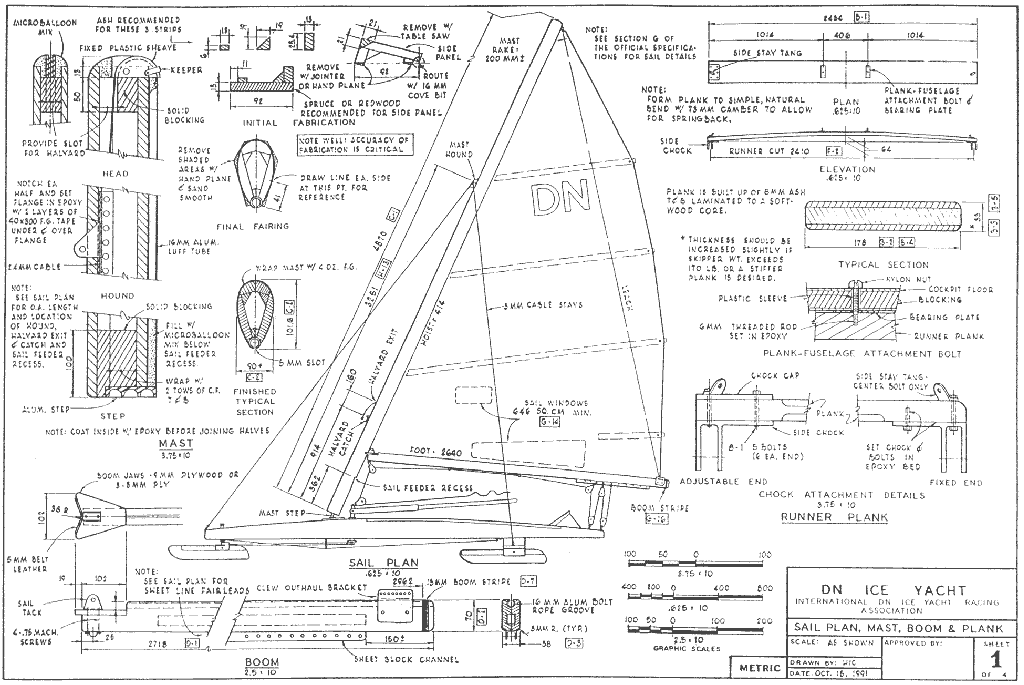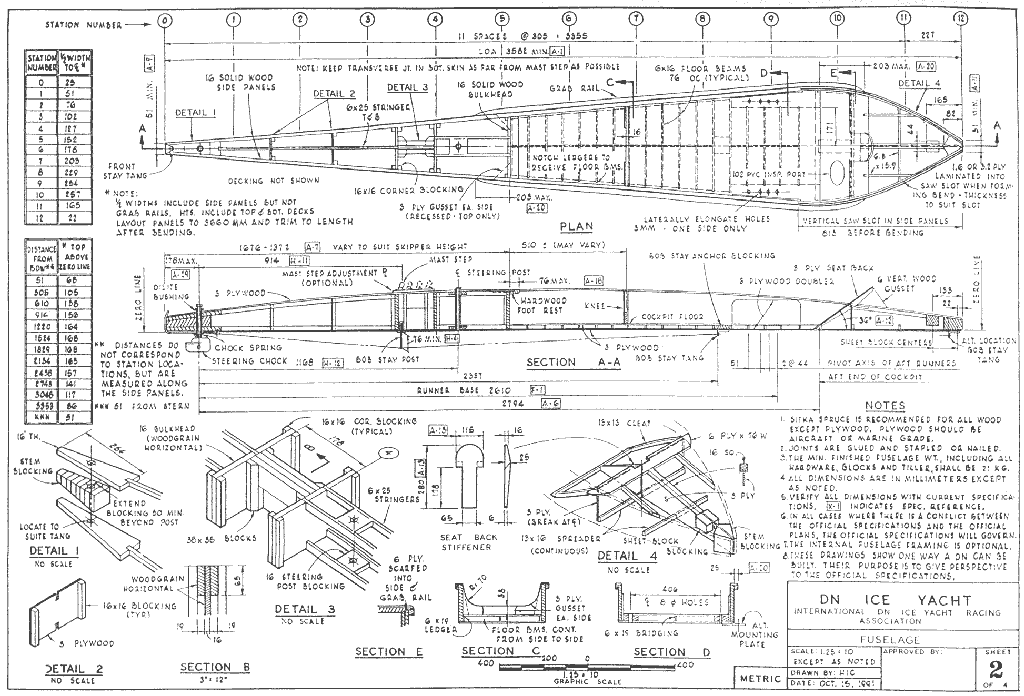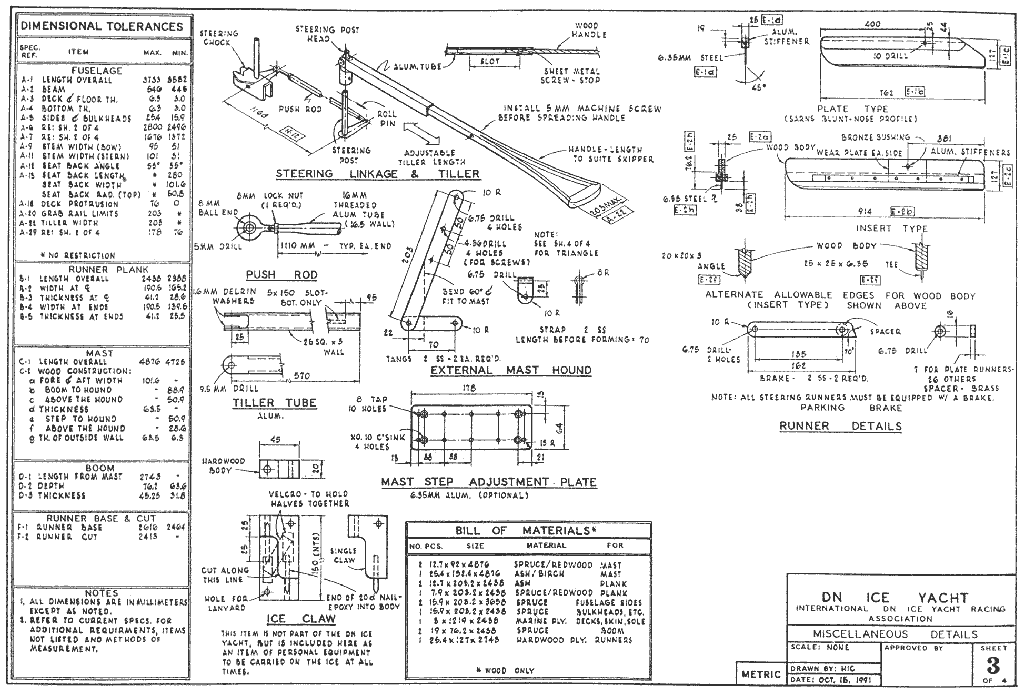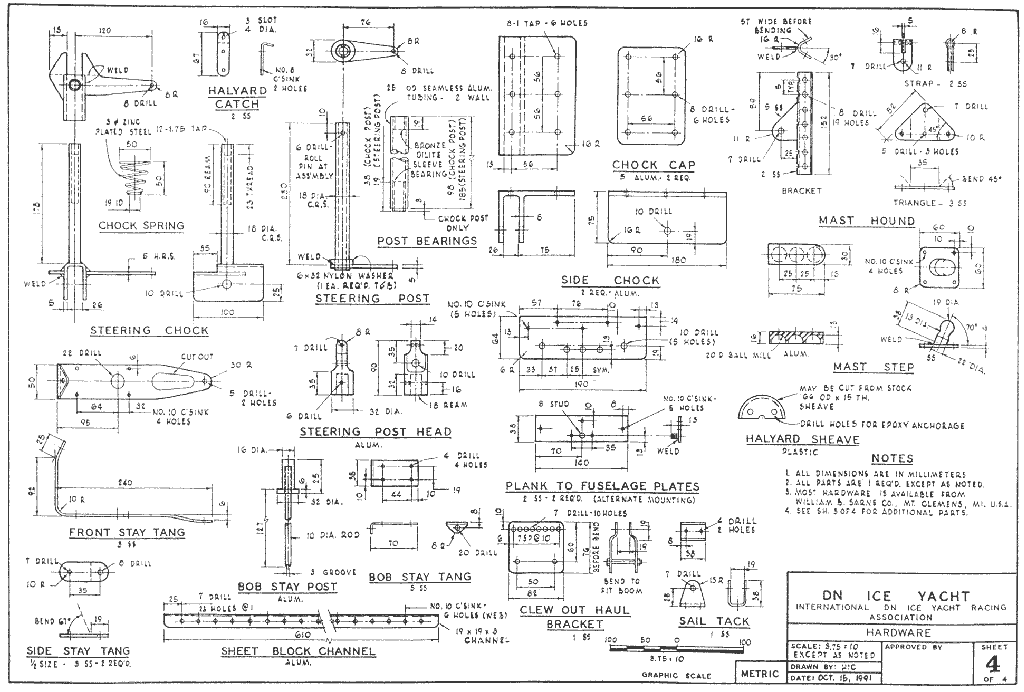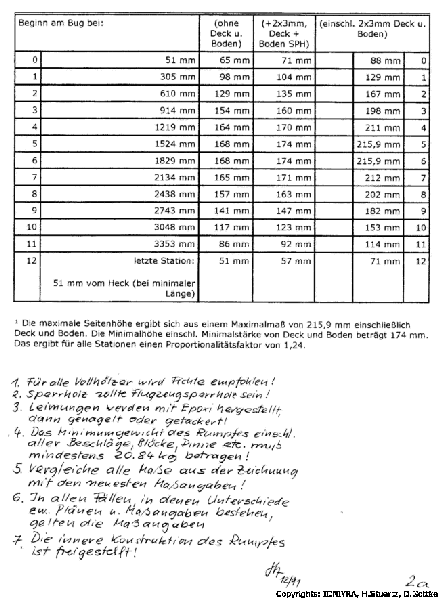|
I was lucky enough to befriend one of the original builders of
the DN iceboat, Don Daller. Don was a great guy, always cheerful,
and came to every swap meet with a box full of early pictures and
articles about iceboating. When he finally got to where he could no
longer carry his iceboat to the ice, he sold me his boat and
transferred the sail number to me. I'm proud to sail with number 46,
and will always remember Don.
Later, as Don's health started failing, he asked me to take
posession of his collection of iceboat articles. For several years I
brought the binders to swap meets, but the pages were getting old
and some of the articles ended up missing. I always wanted to
preserve some of those articles, and this is a start.
What we call the DN Iceboat started out with humble beginnings at
the Detroit News hobby shop in the mid 1930's. The original design
was a collaboration between master woodworker Archie Arrol and
iceboaters Joseph Lodge and Norman Jarrait. Times were tough, with
the US in a deep depression, and most iceboats were expensive toys
of the rich and famous.
Joe Lodge and Norm Jarrait saw a need for an inexpensive,
home-buildable iceboat that could be built out of common lumber and
simple hardware. They designed the new iceboat so one person could
load it on the roof of a car, or fit it in the bed of a pickup
truck. It was Joe Lodge's idea to make the new iceboat a
front-steerer. They called their boat the Blue Streak 60.
Archie, who was the head of the Detroit News hobby shop and had
been building model yachts for years, worked with Joe and Norm in
1936 to build the first Blue Streak 60.
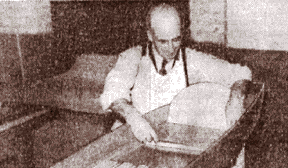
Archie Arrol at work in the Detroit News hobby
shop
The first Blue Streak performed very well, especially in light
wind. On the first day out on Lake St. Clair in the winter of '36,
while the big boats like Deuce, Bernida, and Flying Dutchman
couldn't move, the Blue Streak surprised the other iceboaters the
way she could sail with hardly any wind.

A Blue Streak 60 on Lake St. Clair
In 1937 a group of about 50 wanna-be iceboaters got together at
the Detroit News hobby shop, and for the sum of $32 were supplied
with all the materials needed to build a Blue Streak 60, including a
sail built by Howard Boston. In those days, $32 was a lot of money,
at the time Don Daller was working for $0.50 an hour, three days a
week. They scrounged parts where they could - the steering was
accomplished with '34 Ford brake rods, rigging was galvanized steel
from the local hardware store. The mast didn't have a halyard, you
simply cleated the sail at the top and bottom of the mast and stood
the whole rig up on the boat. The mast had a cut-off lag bolt in the
bottom which fit into a hole in the deck - no ball and socket
needed. Runners were angle iron on white oak bodies.
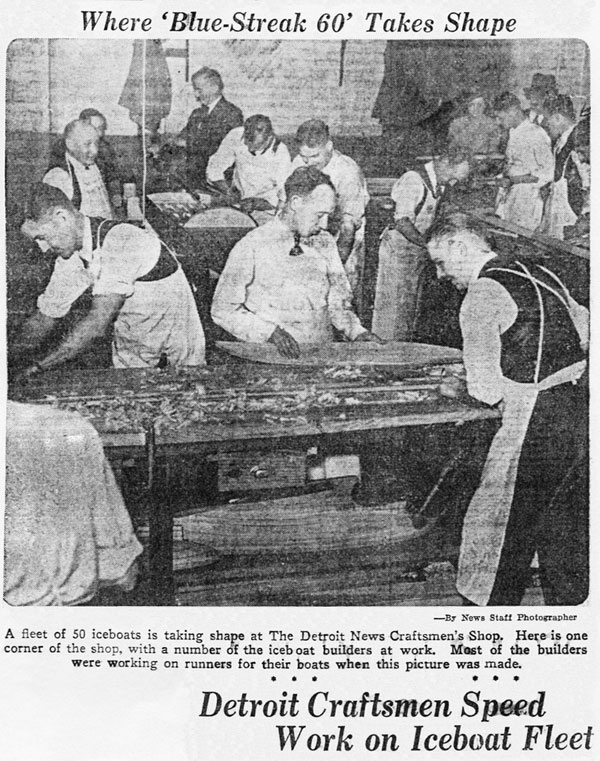
Unfortunately most of the boats built in 1937 broke up in the
first season due to some design deficiencies. Joe and Norm
redesigned the Blue Streak 60, and the same group of builders got
together to build a second set of iceboats in 1938. Some of the '38
boats are still around, and at least one still gets out on the lake
occasionally. As seen in the picture below, sailors in the early
days didn't even take off the plank for transport! Also note the
front runner, the second set of runners the group built (the first
set were angles) were T-irons.
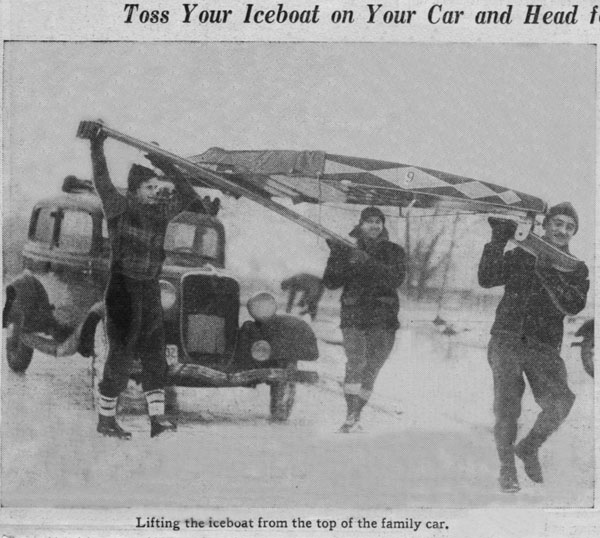
Some interesting things to note on the original "DN" (see the
picture below):
- There was originally only one sheet block on the rear deck of
the Blue Streak - a 2:1 mainsheet purchase. Later another block
was added to the boom to make a 3:1 puchase, and then eventually a
second block on the deck for 4:1 - the same as on todays DN.
- The mainsheet went through a single turning block on the mast,
not on the boom or tiller post, and no ratchet block!
- The mainsheet didn't provide any downhaul on the luff of the
sail, instead the luff rope went through a hole in the boom jaw
and was tied to a cleat.
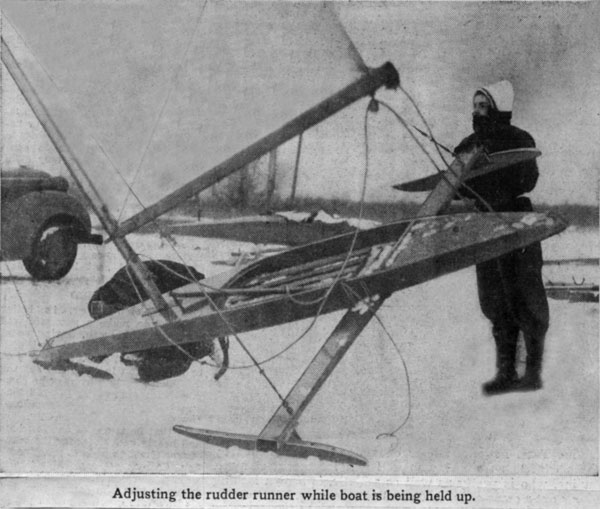
Over the years the design was modified at the whim of the
builders, and the name was changed to the DN 60. A group of
DN sailors got together in 1953 at Clifford Cartwright's house on
Cass Lake and outined a Constitution. The first Specifications were
drawn up on the wall of Cartwright's basement shop, where many of
the original specs are still evident today.
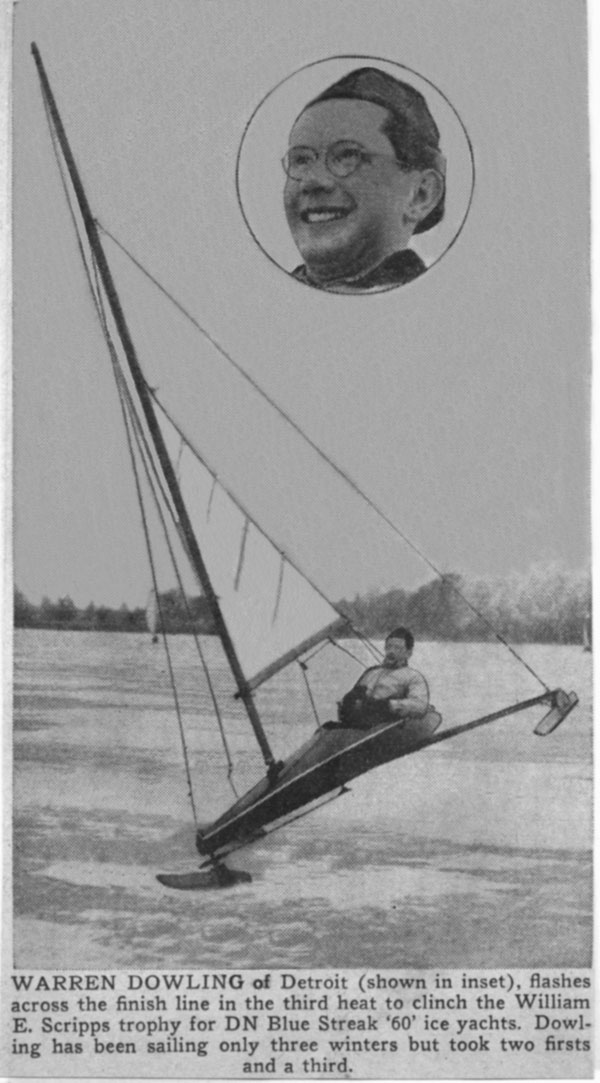
Note this winning Blue Streak 60 with curved deck,
enclosed cockpit, and foot steering
Bill Sarns drew up the first set of "modern" plans and the DN
class adopted them as the Official Plans. Other design changes
slowly made their way into the DN. Some changes stood the test of
time, while others faded into history, like Chuck Cartwright's mini
runner on the tail block - a solution to a problem caused by the
ultra-flexible planks favored at the time.
The next big change was inspired by Jan Gougeon - which moved the
widest point of the hull from the middle (just behind the mast step)
to the plank. The Gougeon "wedge" design has been the basis for all
other DN designs since it's introduction. Actually Jan's design was
preceded by Chuck Cartwright's "Banjo Boat", which was narrow all
the way to the front of the cockpit, then flaired out around the
skipper. Chuck won the Annual Regatta with the Banjo Boat, but was
thrown out because the design was too radical.
Here is a partial list of the first builders of the Blue Streak.
The list is not complete, but it's the only record I could
find...
| Boat # |
Boat Name |
Builder/Skipper |
| 9 |
Skram |
Joe Schermack |
| 11 |
Defensor |
Jack Moran |
| 21 |
Blue Hue |
Walter Katz |
| 32 |
Venus |
Maurice Robinson |
| 38 |
|
Warren Dowling |
| 46 |
Dawn |
Don Daller |
| 65 |
|
Ralph Soden / Leo Kerwin |
| |
|
Al Pochelon |
| |
Scotty |
Howard MacDougall |
| |
|
Merle (Herb) Chandler |
| |
|
Norman Nichol |
| |
|
Art Neffy |
| |
Hody |
Howard Ternes |
| |
|
Russ Johnson |
| |
|
George Armstrong |
I managed to locate a vintage set of blueprints for the original
Blue Streak 60 and scanned them. With much labor, I was able to
restore the scans to near perfect condition. For an insight into how
the original DN was built, check out the scans below...
Original Blue Streak 60 blueprints
Click on the image to see a LARGE version (2 MB each)
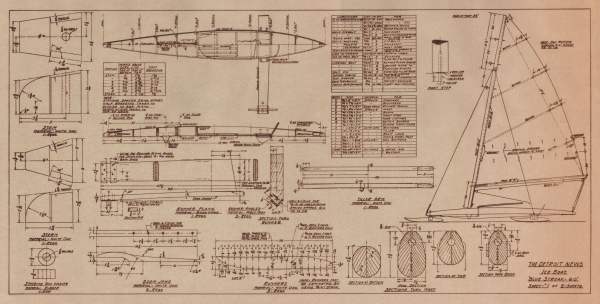
Sheet 1
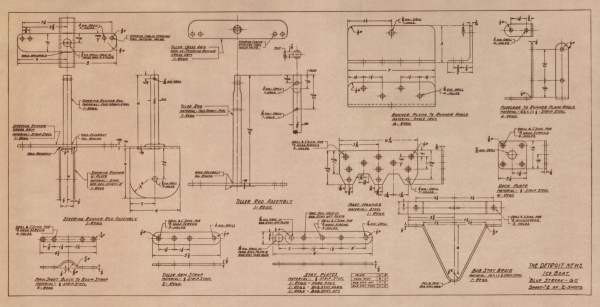
Sheet 2
| 

 DN iceyacht
DN iceyacht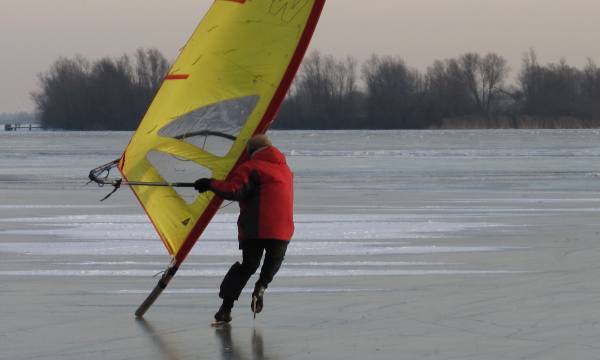 Skate sailing
Skate sailing




























